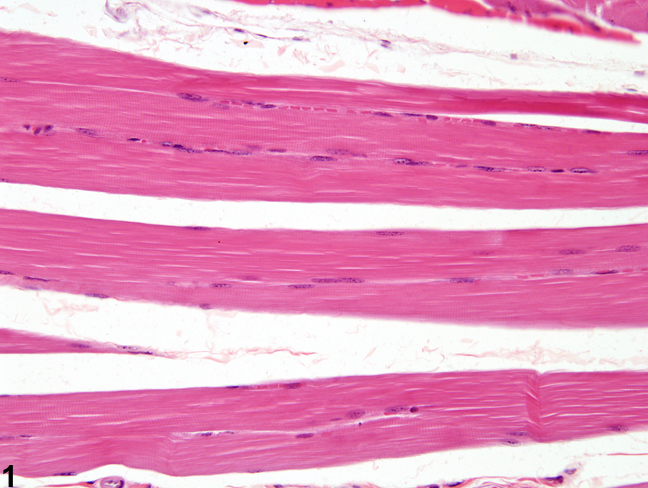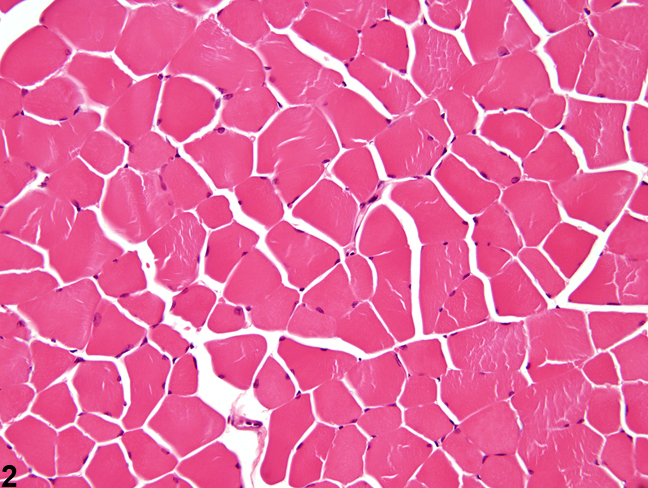Musculoskeletal System
Skeletal Muscle
Narrative

Figure 1. Normal skeletal muscle in a male B6C3F1/N mouse from a subchronic study. Represented is a longitudinal section from a thigh muscle.
Normal skeletal muscle fibers (Figure 1 and Figure 2) are multinucleated cells and the nuclei are located peripherally within the cell. Viable myofibers have characteristic cross striations, which are visible only in longitudinal sections. Responses of skeletal muscle to insult and stimulation represent a robust constellation of mixed reactions. Stimulation can lead to hypertrophy, while disuse can result in atrophy; both are generally readily reversible.

Figure 2. Normal skeletal muscle in a male B6C3F1/N mouse from a subchronic study. Represented is a cross section from a lumbar muscle.
Segmental muscle fiber degeneration accompanied by regeneration is a relatively common histologic finding in which the presence, and the relative proportions, of the two processes is contingent upon the temporal sequence following insult. Frank necrosis, though unusual, may be seen following intramuscular injection or interruption of vascular perfusion (ischemia).

